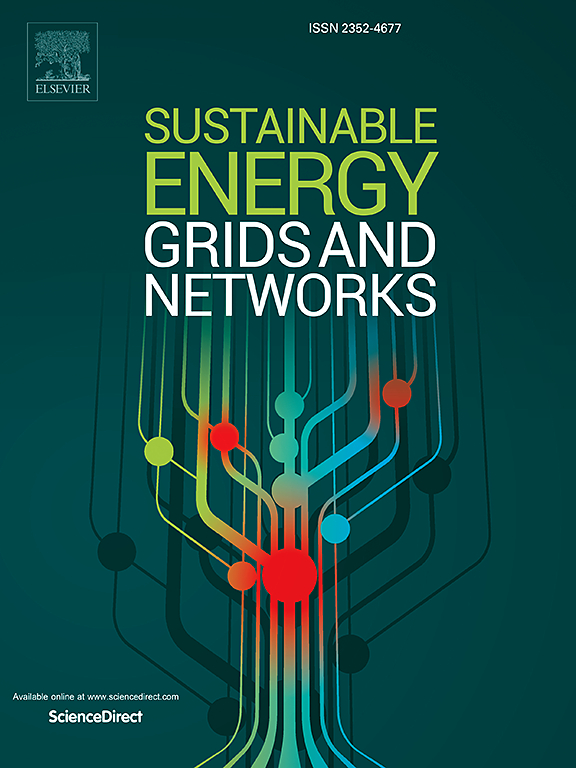Hierarchical collaborative control for real-time economic dispatch and accurate frequency regulation of AC islanded microgrid
IF 5.6
2区 工程技术
Q2 ENERGY & FUELS
引用次数: 0
Abstract
In islanded microgrids (IMGs) characterized by a significant proportion of renewable energy, real-time economic dispatch and frequency control coordination are paramount. Conventional grid-forming (GFM) control methods fail to ensure that renewable distributed generators (RDGs) operate at their maximum power point (MPP), leading to suboptimal economic performance. Conversely, grid-following (GFL) control methods prevent RDGs from participating in frequency regulation, resulting in diminished frequency stability. To address this challenge, this paper introduces a hierarchical collaborative control strategy for real-time dispatch and frequency control in IMGs. The proposed strategy adopts a hierarchical control architecture, comprising primary control, secondary control, and real-time dispatch layers. The real-time dispatch layer employs the proposed distributed algorithm to determine the economically optimal output power for each dispatchable unit. Meanwhile, the primary and secondary control layers utilize decentralized algorithms to regulate the frequency and control the output power based on real-time dispatch outcomes. In the proposed strategy, RDGs are capable of participating in frequency regulation while operating at their MPP, thereby ensuring both stability and economic efficiency in high-penetration renewable IMGs. Test results demonstrate that compared to existing strategies, the proposed strategy achieves more comprehensive control performance, encompassing economically optimal real-time dispatch and accurate frequency control.
交流孤岛微电网实时经济调度与精确调频的分层协同控制
在可再生能源占很大比例的孤岛微电网(IMGs)中,实时经济调度和频率控制协调是至关重要的。传统的电网形成(GFM)控制方法无法保证可再生分布式发电机组(rdg)在其最大功率点(MPP)运行,导致其经济性能不理想。相反,电网跟随(GFL)控制方法阻止rdg参与频率调节,导致频率稳定性降低。为了解决这一挑战,本文介绍了一种用于img实时调度和频率控制的分层协同控制策略。该策略采用分层控制体系结构,包括主控制层、辅助控制层和实时调度层。实时调度层采用所提出的分布式算法确定每个可调度单元的经济最优输出功率。同时,主次控制层采用分散式算法根据实时调度结果调节频率和控制输出功率。在提出的策略中,rdg能够在MPP运行时参与频率调节,从而确保高渗透可再生img的稳定性和经济效率。实验结果表明,与现有的控制策略相比,该策略实现了更全面的控制性能,既能实现经济最优的实时调度,又能实现精确的频率控制。
本文章由计算机程序翻译,如有差异,请以英文原文为准。
求助全文
约1分钟内获得全文
求助全文
来源期刊

Sustainable Energy Grids & Networks
Energy-Energy Engineering and Power Technology
CiteScore
7.90
自引率
13.00%
发文量
206
审稿时长
49 days
期刊介绍:
Sustainable Energy, Grids and Networks (SEGAN)is an international peer-reviewed publication for theoretical and applied research dealing with energy, information grids and power networks, including smart grids from super to micro grid scales. SEGAN welcomes papers describing fundamental advances in mathematical, statistical or computational methods with application to power and energy systems, as well as papers on applications, computation and modeling in the areas of electrical and energy systems with coupled information and communication technologies.
 求助内容:
求助内容: 应助结果提醒方式:
应助结果提醒方式:


